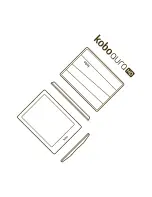
5 - 8
MK4000 MicroKiosk for CE .NET 5.0 Product Reference Guide
Terminal Configuration Manager (TCM)
Terminal Configuration Manager (TCM) is an application that runs on the host computer and customizes flash file
system partitions for the MK4000. The most common use is to create an application partition hex file that contains
the customer's application. Also use TCM to load hex files to the flash memory of the MK4000.
TCM scripts control the customization of partitions. The scripts contain all the information for building an image.
The script is a list of copy commands specifying the files to copy from the development computer to the partition.
TCM works with a pair of directory windows, one displaying the script and the other displaying the source files on
the development computer. Use standard Windows drag-and-drop operations to add and delete files from the script
window.
The DCP for MK4000 includes scripts Motorola uses to build the standard factory-installed
Platform
and
Application
partitions on the MK4000. The standard
Platform
partition contains drivers and the
Application
partition
contains demo applications and optional components. The standard TCM scripts are in the following folder:
C:\Program Files\Symbol Device Configuration Packages\MK4000 v1.0\TCM Scripts.
The processes for building a hex image in TCM include:
•
Starting TCM
•
Defining script properties
•
Creating the script for the hex image
•
Building the image
•
Download the hex image to the MK4000
•
Creating a splash screen
•
Flash storage.
PC Download
Use the developer cable (p/n 25-119283-01R) with TCM to download hex configuration files to the MK4000, to
download customized flash file system partitions to the MK4000, and load hex files to the flash memory of device.
A typical partition is a group of files, combined into a single “partition” that represents a specific area of storage.
Examples of partitions are the flash file systems such as Platform or Application. (Using the desktop computer
comparison, these partitions are roughly equivalent to a C: or D: hard disk drive.) In addition to the “hard disk”
partitions, some partitions are used for single items such as the operating system, monitor, or splash screen.
(Again using a desktop computer comparison, these partitions are roughly the equivalent of the BIOS or special
hidden system files.) Updating a partition erases all data previously in its storage region, i.e., it is not a merge but a
replacement operation.
NOTE
Before creating a script to build a hex image, identify the files required (system files, drivers, applications,
etc.) and locate the files’ source directories to ease the script building process.
Содержание MK4000 MicroKiosk
Страница 1: ...MK4000 MicroKiosk for CE NET 5 0 Product Reference Guide ...
Страница 2: ......
Страница 3: ...MK4000 MicroKiosk for CE NET 5 0 Product Reference Guide 72E 121864 02 Revision A May 2010 ...
Страница 6: ...iv MK4000 MicroKiosk for CE NET 5 0 Product Reference Guide ...
Страница 14: ...xii MK4000 MicroKiosk for CE NET 5 0 Product Reference Guide ...
Страница 36: ...2 14 MK4000 MicroKiosk for CE NET 5 0 Product Reference Guide ...
Страница 46: ...4 6 MK4000 MicroKiosk for CE NET 5 0 Product Reference Guide ...
Страница 66: ...5 20 MK4000 MicroKiosk for CE NET 5 0 Product Reference Guide ...
Страница 68: ...A 2 MK4000 MicroKiosk for CE NET 5 0 Product Reference Guide ...
Страница 134: ......
Страница 135: ......















































